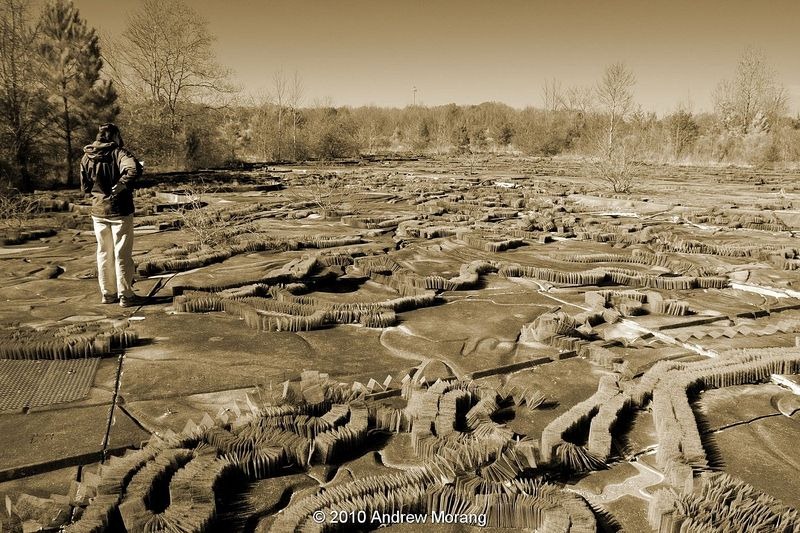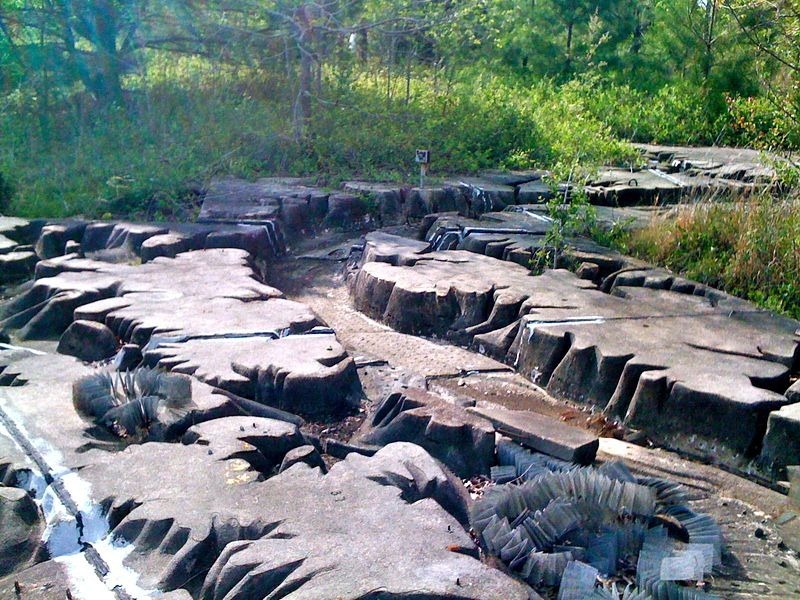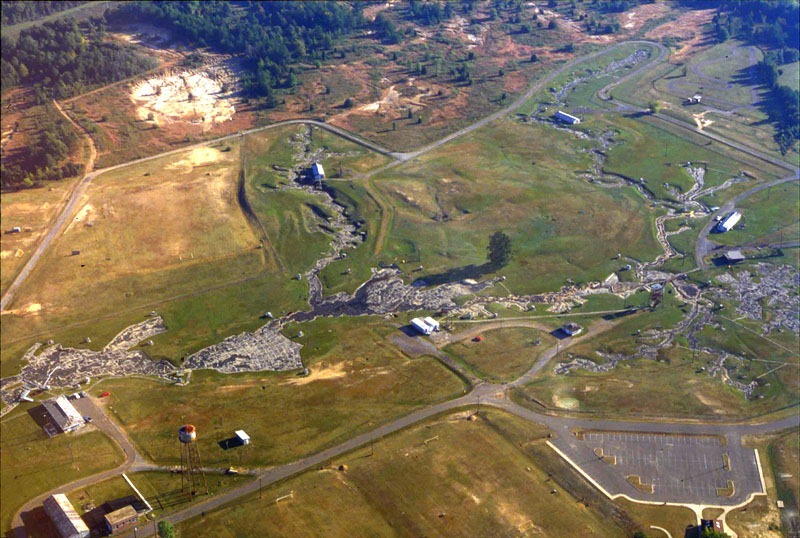After decades of devastating flood in the Mississippi River Basin, Congress passed the Flood Control Act of 1928 which called for immediate implementation of a plan to control the waters of the mighty Mississippi. In the next decade, the Army Corps of Engineers built 29 dams and locks, hundreds of runoff channels, and over a thousand miles of new, higher levees. But the river was not an easy beast to tame. In 1936 another huge flood displaced hundreds of thousands of people in Ohio, prompting Congress to pass yet another Flood Control Act and a series of new works began along the river. The typical response to a flood was to dam areas that had been affected. But such control measures only targeted single sites, and did not look at the entire river system as a whole. As soon as a dam would be built, floods would gush into a new region.

An old postcards showing tourists or engineers examining the Mississippi Basin Model. Photo credit
Major Eugene Reybold, Chief of Engineers of the U.S. Army Corps of Engineers realized the flaw in the current approach. A visionary, Reybold came up with a radical solution: build a large scale hydraulic model of the entire Mississippi River Basin and study the “interactive effects of weather and proposed control measures over time”, and use the knowledge to “develop plans for the coordination of flood-control problems throughout the Mississippi River Basin.”
In Vicksburg, at the Waterways Experiment Station, there already was a model of a small section of the Kanawha River, which could simulate historic flood events and produce accurate flood hydrographs of the Kanawha River. Using the Kanawha River as a pilot model, Reybold drew up a comprehensive plan for the Mississippi River Basin model. The ambitious model would replicate the Mississippi River and its major tributaries — the Tennessee, Arkansas and Missouri Rivers — encompassing 41 percent of the land area of the United States and 15,000 miles of river.
The site selected for the 200-acre working hydraulic model is located near Clinton, Mississippi, not far from Vicksburg. At that time, World War 2 was on and able bodied men were in short supply, so Reybold sought and was granted permission to employ German prisoners of war as laborers to clear and prepare the site. Preparing the site itself took three years from January 1943 to May 1946, before model construction could begin.

Partial overview of the Mississippi River Basin Model. Photo credit
Over the next two decades, the Mississippi River Basin Model took shape. The model was built using an exaggerated vertical scale of 1:100 and a horizontal scale of 1:2000. The larger vertical scale was thought to reduce surface-tension and therefore better simulate turbulence. The entire model was made up of individually cast 10 feet square concrete panels, contoured with the land shape and river bed, including tributaries, cliffs, lakes, flood plains, bridges, and levees. Metal plugs or divots in the river bed provided "roughness" to simulate different types of material, whilst folded metal mesh simulated dense foliage.
Water from a nearby stream was distributed throughout the model through a complex system of pipes and pumps. Reybold also designed a collection basin and a 500,000-gallon storage tower from which he could release large volumes of water over short periods of time to simulate flood events.
To take measurements and collect data, 76 inflow and outflow instruments were installed around the model, including 160 stage instruments that simulated normative weather and flood events on a virtual calendar with simulated days, months and years. An entire day could be simulated in 5 minutes.

The first real success of the project came in April, 1952, when the model was used to predict that year’s flood. Based on the results from the test on the model, the government was advised where levees needed to be raised and which areas needed to be evacuated. That year the Mississippi River Basin Model prevented an estimated $65 million in damages. For the next two decades until computer modelling software became available, the Mississippi River Basin Model was used extensively to determine flood control strategies from Montana to Louisiana. The model was used last in 1973 to test the effects of opening the Morganza Spillway.
In the 1990s, the model was designated as a Mississippi Landmark and for a brief period a city park was formed around the site. But when the cost of maintaining the park became too high, it was abandoned. The Mississippi River Basin Model now lies in ruins and is overgrown with bushes.
Also see: Scale Model of the Mississippi River on Mud Island





Sources: Places Journal / Wikipedia / io9



Comments
Post a Comment